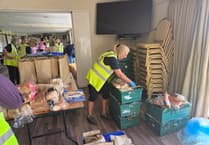Museum of Dartmoor Life awarded Royal Society Places of Science grant.
The Museum of Dartmoor Life, in Okehampton, has been chosen as one of thirty-six small museums across the UK to be awarded funding of up to £3,500 by the Royal Society in the latest round of its Places of Science scheme to engage communities with their local science stories.
This celebrates projects evoking curiosity, interest and enthusiasm by exploring science in a creative way, while helping the museums thrive. From family days at the museum, through community-led creation and curation, to workshops for schools and documentary filmmaking, projects offer an exciting way for people to engage with science in the local area and beyond.
The Museum’s 2025 exhibition title is ‘A Shroud for Mother Nature – Is Dartmoor Dying?’Nearly 80% of Sites of Scientific Interest at Dartmoor National Park have been given ‘unfavourable’ status. The Museum of Dartmoor Life will be showcasing the threats to the Moor and the ongoing conservation efforts to protect its landscapes, flora and fauna.
Kristy Turner, Manager/Curator of the Museum said: “We are thrilled to be awarded this second grant from The Royal Society to enable us to explore this critical situation. So many people are involved in protecting Dartmoor but opinions do differ and we have found that members of the public are confused. Without this funding, small museums like ours would struggle to bring these exhibitions to life for our visitors to learn from and be inspired by.”
Professor Russell Foster, Chair of the Places of Science panel said: “We have such an exciting array of themes being explored by the Places of Science awardees this year, from the history of space exploration to maths in the Islamic world and the impact of climate change at a local level.
“It has been wonderful to see so many creative ways of sharing scientific stories that are both engaging and accessible. I hope these projects allow people of all ages to connect with science in new ways and feel a shared sense of ownership of their local scientific history.”




